The grommet is a handy tool that can be used to protect fabric. It can be used to hang fabric and to prevent further damage to fabric that has holes in it. Sometimes it is necessary to remove a grommet quickly, and there are specific ways to do this. Today we will suggest some techniques on how to remove a grommet.
How to Remove a Grommet: Five Effective Methods Method 1: Using a Dead Blow HammerIn this method, you will need some essential tools for removing the grommet. You will need a flat head screwdriver, a dead blow hammer, and a wooden plank. After gathering all these, you can start removing the grommet. Before we get into the process, it is worth mentioning that this technique is suitable for eliminating grommets of larger sizes.
First of all, you will need to get a piece of wood. Place the wooden plank on the workbench or a hard surface area. Then place the grommet in the middle of the plank.
Now you have to place the grommet-bearing cloth on a piece of the wooden plank. Then you have to make sure that the wooden plank is firmly attached to the table. Now you have to place the washer-bearing side of the grommet, and the shank will be on the opposite side. Next, you have to make sure that the tip of the grommet is positioned at the center of the washer. Now it is time to take the hammer and start striking the shank of the grommet gently.
You have to take the dead blow hammer and the flat head screwdriver and then start heating the washer around the circumference. The washer will start to lose, and after the continuous blow, it will come off. Once the washer comes off, the shank will also come off from cloth. This is because the washer helps to connect the shank with the cloth. First, you have to set the washing machine at a low spin speed.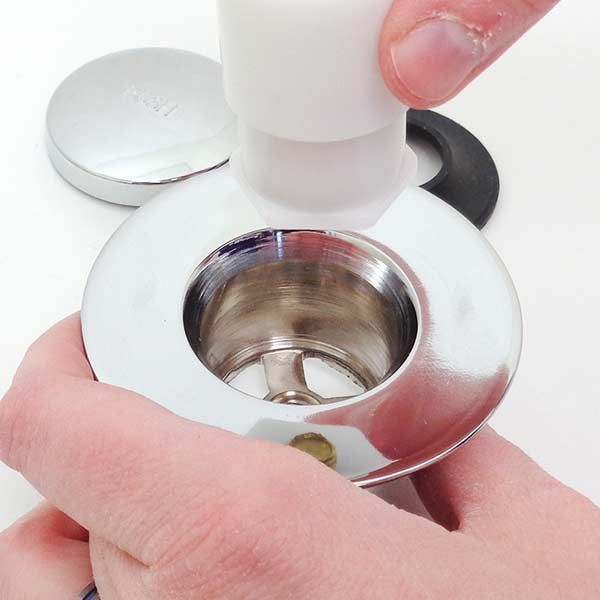 This will make sure that the fabric does not get too loose. If the fabric gets too loose, then it will tear easily.
This will make sure that the fabric does not get too loose. If the fabric gets too loose, then it will tear easily.
This method includes using an ordinary plier to remove the grommet. You can easily use this method to remove the grommet, which is comparatively smaller. However, you have to place the washer end on the table in the same manner, and then to use the plier, you have to start unhooking the washer. It is a simple method and can easily be performed by everyone. All you need to have are a few tools, like an ordinary plier and a pair of pliers as well. You can also use an old toothbrush for cleaning the faucet after removing the grommet.
In this manner, the whole washer should be unhooked using the plier, once the washer is unhooked, it will automatically come off from the cloth, and the shank will be taken out quickly.
Method 3: Using a Drill BitThis method includes the use of some electronic accessories like a drill bit.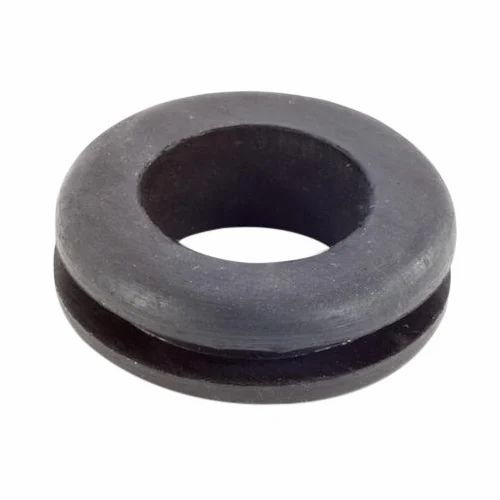 The drill bit, which we use for the fastener attachment, can be easily used for this process. But there is a limitation that should be checked before applying this technique. The grommet, loosely attached to the fabric, cannot be removed using this process. The grommet will start revolving while using the drill bit.
The drill bit, which we use for the fastener attachment, can be easily used for this process. But there is a limitation that should be checked before applying this technique. The grommet, loosely attached to the fabric, cannot be removed using this process. The grommet will start revolving while using the drill bit.
So you have to take the grommet, insert the drill bit on the grommet and then start the drill machine. You can turn the grommet using your hand. The firm attachment of the washer will get lost gradually, and it will come off. Eventually, the total shank and washer will be detached.
Method 4: Screw, Drill, and GrommetIn removing a grommet, you have to use these three things a screw, a drill, and a grommet. This is an effective way of removing the grommet. First of all, place the grommets on the metal plate. Next, you have to put the metal plate on the table, and then use the drill.
You have to press hard on the drill so that it can pierce through both sides of the grommet. Once pierced, you will be left with just a piece of the shank in your hands. Now you have to take out the screw. Now you have to pierce the drill in the same manner on both sides of the shank, and then it will easily come off from the cloth.
Once pierced, you will be left with just a piece of the shank in your hands. Now you have to take out the screw. Now you have to pierce the drill in the same manner on both sides of the shank, and then it will easily come off from the cloth.
This is another method for removing grommets. This method is suitable for small-sized grommets. You have to place the grommet on a flat metal plate, and then you have to use the screwdriver for prying open both sides of the grommet.
The shank of the grommet is attached with some holes, and through these holes, you can easily pull out the shank. Now take out the pieces of the washer from the cloth.
Note: This is all about the different methods of removing a grommet. Now it is time to be aware of some precautions necessary for the removal of the grommets. It will help you in making your work easier and safer too. You have to ensure that you are not applying this process to any electrical appliance.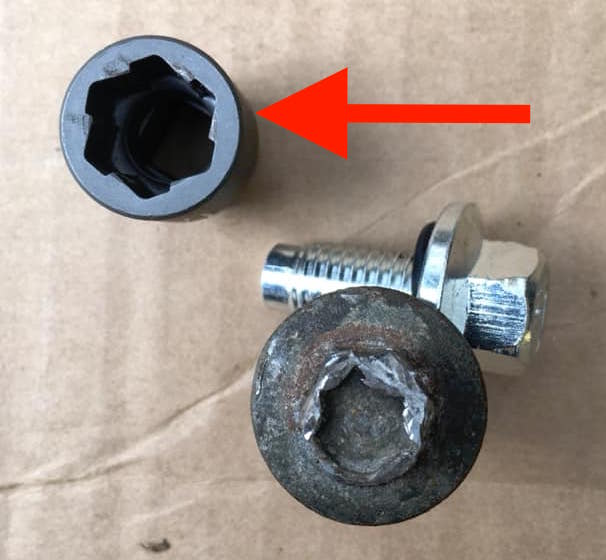 This process is only applicable to the fabric, which does not contain any metal.
This process is only applicable to the fabric, which does not contain any metal.
1. Be sure to use this process for an old grommet. These techniques cannot remove new or firm grommets.
2. Make sure that you are applying all the methods on a flat metal plate, so there are no chances of any mishap linked to it.
3. This method does not apply to electrical appliances. So you have to be very careful before using it for any appliance.
4. You do not need to use the drill machine for the metal plate, which is already pierced with holes of grommets. This method can be effective only if all the grommet sides are equally pierced with the drill machine. If you choose, you can use a drill bit for this process.
5. For the best results, it is advised to clean the cloth after removing the grommet from it. This will make it more presentable for future use.
What is a Grommet?Grommets are used in the replacement of missing teeth.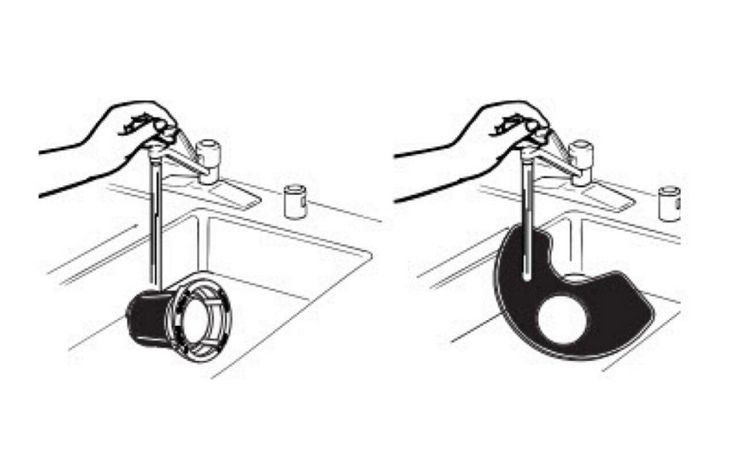 They are small rings normally made from Natural Rubber inserted between two abutment crowns to hold a complete denture in place while it heals.
They are small rings normally made from Natural Rubber inserted between two abutment crowns to hold a complete denture in place while it heals.
They are used when an implant has been placed, but the gum tissue is still not healed or closed. The grommet provides support and protection to the gum from abrasion, allowing it to heal before a final restoration process begins.
Where Can You Find Grommets?If you are looking for where to buy grommets, many online stores specialize in selling them. You can easily find information about these online stores by doing a simple search on the Internet. Many large retailers also carry them if they deal in fabric or cloth. While buying, look for rubber or plastic grommets, not metal ones.
How Long Does it Take to Remove a Grommet?How long it takes to remove a grommet varies depending on the material used in the grommet’s construction.
1. Fabric GrommetsFabric grommets are usually made of rubber or plastic, with some metal ones occasionally encountered.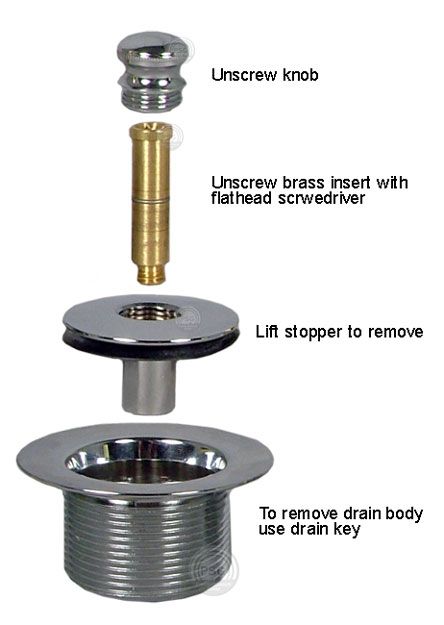 To remove a fabric grommet, you’ll need to be patient. The rubber or plastic can stretch quite a bit, so it may take some time for you to gather all of the material back in its original configuration.
To remove a fabric grommet, you’ll need to be patient. The rubber or plastic can stretch quite a bit, so it may take some time for you to gather all of the material back in its original configuration.
Metal grommets are usually made of aluminum or brass, with steel ones occasionally encountered. To remove a metal grommet, you’ll need to have some side cutters or pliers. You can usually grip the grommet through the fabric with these tools and then push it into the hole to release it.
3. Wire GrommetsWire grommets are often made out of aluminum, although steel ones are occasionally encountered. They can be removed by hand or by using other tools to grip the grommet through the fabric and release it from the other side.
4. Plastic GrommetsPlastic grommets are usually quite easy to remove. However, pliers and side cutters may be needed if the material is thick and tough enough that it cannot be easily pulled through the hole by hand.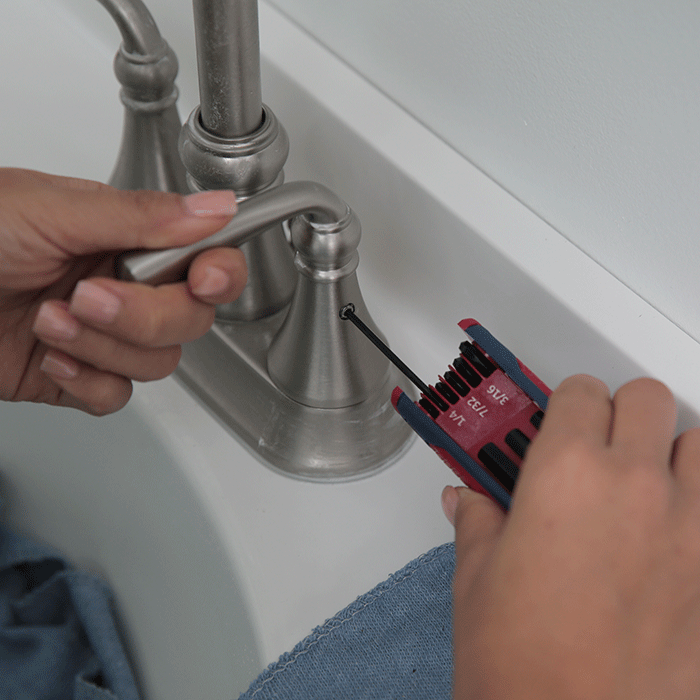
Rubber grommets can be difficult or easy to remove. If the rubber is worn at all, it may be easy to pull it through the hole by hand because the rubber will stretch quite a bit. However, if the grommet is still in good condition, you’ll need side cutters or pliers to help you grip and release them from either side of the fabric.
Yes, you can undo a grommet. Grommets are small pieces of metal used to seal the opening of a pipe. They are inserted into the pipe using a tool called a grommet wrench.
Are Grommets and Eyelets the Same?Grommets and eyelets are the same types of fasteners, but they have different purposes. Grommets are used to attach the fabric to a piece of wood or other material, while eyelets are used to attach the fabric to a metal surface.
Do Grommets Hurt?Grommets don’t hurt when they are inserted. However, some people may experience mild discomfort or pain when the grommet is removed. This is usually due to the insertion process being too forceful or the grommet being inserted incorrectly.
However, some people may experience mild discomfort or pain when the grommet is removed. This is usually due to the insertion process being too forceful or the grommet being inserted incorrectly.
Eyelets are stronger than grommets because they have greater tensile strength. Grommets have lower tensile strength and can be pulled apart more easily.
What Is the Difference Between an Island and a Grommet?An island is a piece of land that is surrounded by water. A grommet is a hole in the fabric of an article of clothing, such as a shirt or pair of pants, through which the wearer’s head and neck can be seen.
In conclusion, we would like to express our deepest gratitude towards the readers. The techniques that have been described here will surely be beneficial for removing the grommet from fabric. Besides, this will be an innovative technique for the beginner to learn new things, and the persons interested in DIY activities will also benefit from these processes. Thank you for your time. Have a nice day!
Thank you for your time. Have a nice day!
The grommet in your child's ear drum has done its job. There is no more fluid behind the ear drum in the middle ear. The ear is now healthy again.
Most grommets come out on their own. Some grommets are slow to come out. If this happens to your child it needs to be taken out with a little operation.
Your child will be given a short, general anaesthetic and will be completely asleep.
The surgeon will shine a microscope into the ear. He will pull the grommet out of the ear drum with a special instrument. Because your child is asleep, there will be no pain during the operation.
The operation can be done as a day case. This means that your child comes into hospital on the day of the operation and goes home the same day.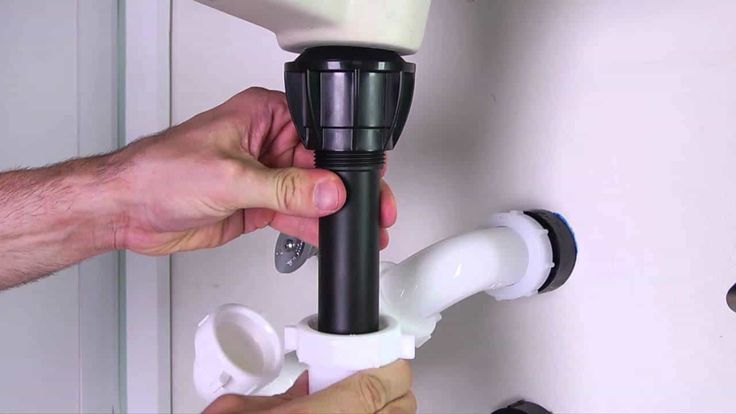
Rarely they may have to stay in the hospital for one night until the effect of the anaesthetic has completely gone.
When the grommet is out, there is a small hole left in the ear drum. This will usually close up on its own. The surgeon will check your child's ear drum in the outpatient clinic after about six weeks, to make sure that it is has done this.
If you leave things as they are, the grommet may stay there for years. It could be difficult to get out if the delay is long.
All the time the grommet is in place, your child must not get water in the ears. Swimming and especially diving are not safe unless the ears are protected with ear plugs and a tight bathing cap.
Your child cannot have the ear syringed to remove any wax. It the grommet stays in too long there is an increased chance of your child getting and ear infection.
Although there is no rush to have the grommet taken out, your child would be better off without it.
Your child must have nothing to eat or drink for about six hours before the operation. This means not even a sip of water. Your child's stomach needs to be empty so that the anaesthetic can be administered safely.
If your child has a cold in the week before admission to the hospital, please telephone the ward and let the ward sister know. The operation will usually need to be put off. Your child has to get over the cold before the operation can be done because by having an anaesthetic the cold could turn into a serious infection in the chest.
Sort out any tablets, medicines, inhalers that your child is using. Keep them in their original boxes and packets. Bring them to the hospital with you.
On the ward, your child will be checked for past illnesses and will have special tests to make sure that he or she is well prepared and can have the operation as safely as possible. Please tell the doctors and nurses of any allergies to tablets, medicines or dressings or problems after any previous anaesthetic.
You and your child will have the operation explained to you and you will be asked to fill in an operation consent form for your child that you sign for them.
Before you sign the consent form, make sure that you fully understand all the information that was given to you regarding your child's health problems, the possible and proposed treatments and any potential risks. Feel free to ask more questions if things are not entirely clear.
Many hospitals now run special pre-admission clinics, where you visit a week or so before the operation, where these checks will be made.
Usually there is little or no pain after this operation. If there is any discomfort in the ear, paracetamol in liquid form should easily control it.
A general anaesthetic may make your child slow, clumsy and forgetful for about 24 hours. While in hospital, the nurses will support you to help your child until he or she feels better.
Before you leave the ward, the nurses will give you an appointment to come to the ENT (ear, nose and throat) outpatient clinic in six weeks or so for the surgeon to check your child's ear drum.
The surgeon in the outpatient clinic will tell you if the hole in your child's ear drum has healed. He will let you know if it will be safe for your child to swim again without any special protection for the ear.
After three to four hours on the ward, your child should feel fit enough to go home.
The doctors will check that your child's ear is comfortable and is not bleeding.
It is important that your child still keeps the ear dry. Any water in the ear may go through the hole in the ear drum and cause an infection. Plug the ear with a piece of cotton wool rubbed in Vaseline at bath times, or when washing your child's hair.
He or she should not go swimming unless the ear is properly protected with ear plugs and a tight bathing cap.
Use a painkiller such as paracetamol suspension every six hours as needed to control any pain in the ear.
As with any operation under general anaesthetic, there is a very small risk of complications related to the heart and the lungs.
The tests that your child will have before the operation will make sure that he or she can have the operation in the safest possible way and will bring the risk for such complications very close to zero.
If you follow the advice given above, you are unlikely to have any problems.
There is a very small risk that your child's ear may bleed when you get home. If this happens, come back to the ward after calling them. It should usually stops fairly soon, but you may find that the doctor needs to put a cotton plug in your child's ear and apply some pressure until the bleeding stops.
There is also a very small possibility for an ear infection. If this happens, you will notice some fluid coming out of the ear (with a bad infection this can be thick, green and or yellow and smelly) and your child might have a headache or temperature. The infection usually settles by taking antibiotics for a week or so.
Sometimes the infection can be much more serious and spread through your child's blood or even towards the brain.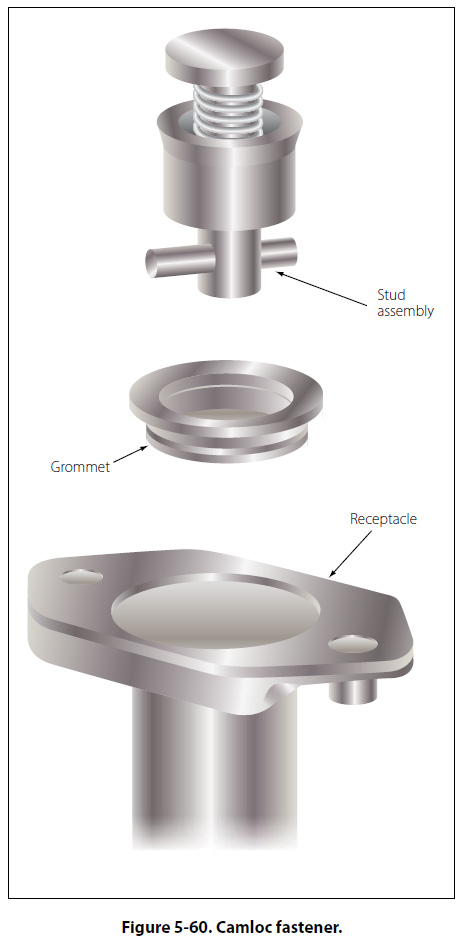 If this is the case your child will need to stay in the hospital and have intravenous antibiotics (through a vein in their arm).
If this is the case your child will need to stay in the hospital and have intravenous antibiotics (through a vein in their arm).
In 2 to 3 per cent of children, the small hole in the ear drum may not close up after six weeks. Given more time, most of these close on their own without any treatment. The doctor in the clinic will arrange to see your child for a subsequent follow up to check. A few need to be closed with another operation.
The grommet insertion operation is successful for 70 per cent of children who have it. The remaining 30 per cent may need a grommet reinserted on one or more occasions because fluid builds up again at a later date.
These notes should help you and your child through the operation. They are a general guide. They do not cover everything. Also, all hospitals and surgeons vary a little.
If you have any queries or problems, please ask the doctors or nurses. They will be happy to help you.
This content is imported from Third party. You may be able to find the same content in another format, or you may be able to find more information, at their web site.
You may be able to find the same content in another format, or you may be able to find more information, at their web site.
Based on a text by Surgery Door
Last updated
Very complex engineering structures are being built in multi-storey buildings, while the installation of these structures must be compact and affordable. Naturally, the maintenance of such a sewer system is very expensive, but not all residents of multi-storey buildings want to understand this.
For this reason, public utilities sometimes have to go to extreme measures. After all, it is quite difficult to convince tenants to pay utility bills on time and in full. One of the effective ways that can cause inconvenience to the tenant is the installation of plugs on the sewer to the debtors for a period until he pays his debts on utility bills.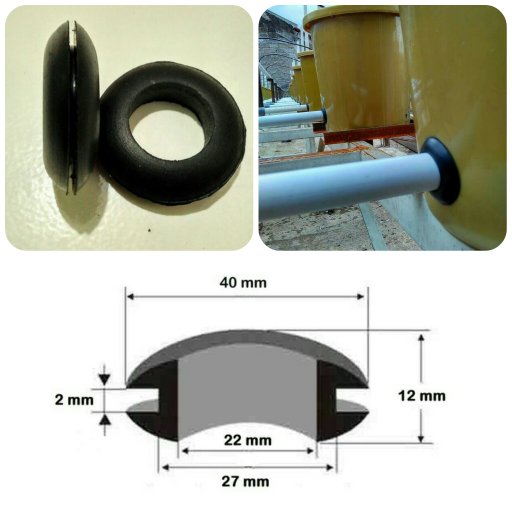
Content
If water is turned off in an apartment building because of several debtors, then there will be many disturbances. Otherwise, there is no way, because water is supplied to an apartment building through a single riser.
Theoretically, there is an option to turn off the water for one apartment, but there is one “but”. According to the current law, housing is inviolable property, and therefore the owner of the apartment has the right not to let inspectors into the house.
In this regard, utility companies have found another way out of the situation - blocking the sewerage to the debtors with the help of a plug. And if you have thoughts about whether it is legal to put plugs on the sewer to debtors, then the answer is tritely simple - yes, it is legal.
End caps come in 2 types:
As a result, the debtor experiences inconvenience and the utility expects payment of the debt.
Installed plug on the sewer serves as an obstacle to the movement of polluted water down.
Since the utilities do not have access to the inside of the riser, they have to look for other ways to solve the problem. Today it is possible to use video cameras with remote control and special equipment.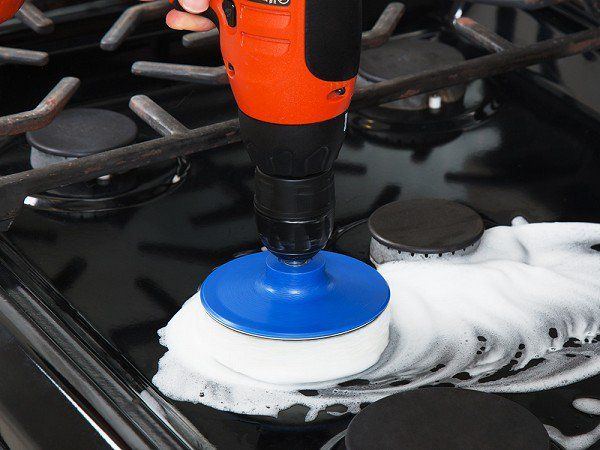
The procedure for installing the plug is as follows:
After the plug is installed, the movement of sewage in the apartment stops either partially or completely.
Today there are many companies that provide services for the installation and removal of plugs. You can find out from them how much it costs to remove the plug from the sewer, and in what terms this company can perform such work.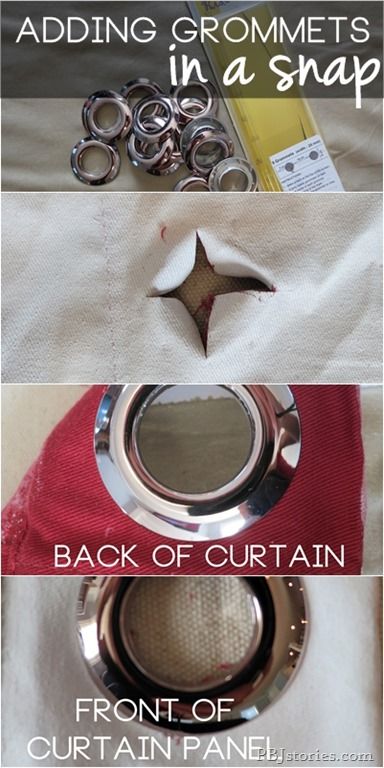
If the price of removing the plug from the sewer did not suit you, then you can try to do this work yourself.
Naturally, in order not to have to remove the plug from the sewer, you need to pay utility bills on time and in full. However, debtors do not always plead guilty in this situation and look for other ways to solve the problem.
It is noteworthy that the installed plugs for the sewer to the debtors can be removed by the residents of the apartments themselves, and there are no illegal actions in this.
When a resident in the apartment panicked, because they put a plug on the sewer, what to do and how to be - you should pull yourself together and calm down. This is not a hopeless situation, there are plenty of ways to solve this problem.
In order to understand how to remove the plug from the sewer yourself, you don't need much intelligence. But to do this is not as easy as it might seem at first glance. In fact, it is technically almost impossible. After all, the installation of a plug on the sewer is carried out using special equipment, and to remove it, you will have to remove the toilet bowl, which is filled with feces.
In fact, it is technically almost impossible. After all, the installation of a plug on the sewer is carried out using special equipment, and to remove it, you will have to remove the toilet bowl, which is filled with feces.
To understand how to remove the plug from the sewer yourself, you need to study the general design of connecting the sewer system of an apartment to a common riser. If the apartment has a riser made of metal-plastic or PVC, then the procedure for removing the plug is less problematic.
It is possible to remove the plug mechanically and chemically, but do not forget that these actions can lead not only to damage, but also to clogging of the riser.
I would also like to note that the sewer plug for debtors has no legality. Therefore, no enterprise will be able to prove anything, if they notice that the debtor removed the stub on their own, then they will silently install it again.
By the way, today there are many types of equipment, the principle of which is similar. With the help of a long cable, a manipulator is lowered, the main task of which is to install a plug.
With the help of a long cable, a manipulator is lowered, the main task of which is to install a plug.
Equipment that can remove plugs mechanically includes: Octopus, Kit and others.
When an apartment owner has a debt to pay utility bills, a written notification is sent to him. If the debtor ignores the notification received, then the utility company has every reason to block the sewer system of the apartment.
In general, the blocking of sewerage by the Sprut system consists of the following elements:
According to the Sprut system, the cap leaves a gap of 3 mm. A gap of this size is quite enough to remove polluted waters. But the sewer system in the apartment will not be able to fully function.
Another sewer blocking is the “Kit” system, which is similar in principle to the Sprut blocking system. The components of this blocking system are:
The components of this blocking system are:
The Kit system works as follows: a probe is brought through a common riser to a specific outlet and a plug is installed there.
In general, sewerage is shut off for non-payment of utility bills. In order not to complicate your life, it is better to pay utility bills on time.
Need a shut-off valve for the sewer to pass the sewage down, but it does not allow movement back up. It is recommended to install such a valve for residents of apartments on the first and second floors. It makes no sense for residents of other floors to use a shut-off valve for sewage.
Contents:
1. What is a sewer plug
What is a sewer plug
2. Installation of plugs for sewerage to debtors
3. How to remove the plug from the sewer pipe yourself
4. Methods for removing plugs
In multi-apartment buildings, rather complex engineering structures are used, and all of them must be installed in an accessible and compact way. Of course, the maintenance of such a system is very expensive, and apartment residents should understand this.
Many understand, but not everyone understands, and often utility managers have to go to extreme lengths to convince tenants to pay their bills. One of the rather unpleasant ways is to install a plug on the sewer pipe. However, apartment owners often find ways to solve such problems. About sewer plugs and will be discussed in this article.
Given the number of non-payers and their rights, many utility companies have to be very creative to get people to pay. Of course, the easiest and most affordable method to turn off a tenant who does not pay for water is to turn it off in this apartment. The problem is that in apartment buildings, water is supplied through a single riser, which can only be completely shut off - and this will immediately lead to indignation on the part of conscientious citizens. Therefore, the blocking of sewerage to debtors is carried out by other methods.
The problem is that in apartment buildings, water is supplied through a single riser, which can only be completely shut off - and this will immediately lead to indignation on the part of conscientious citizens. Therefore, the blocking of sewerage to debtors is carried out by other methods.
You can close the water for one apartment from the inside, but anyone can refuse to let inspectors into their housing, and they will be absolutely right: the current law stipulates this point, saying that housing is inviolable.
The solution the companies came up with is extremely simple: if one apartment cannot shut off the water, then the sewer can be shut off in that apartment simply by plugging it in. Since such a solution is completely legal, it is not surprising that it is actively used.
Plugs can be very different, depending on their purpose:
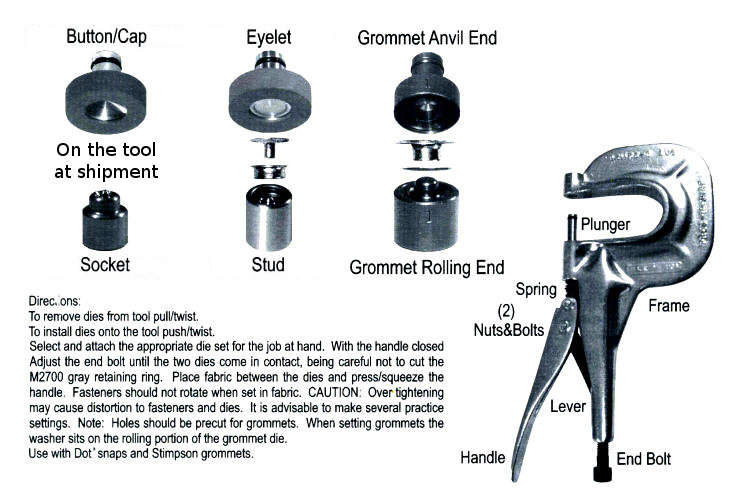
Repeating the above, we can say that the installation of sewer plugs for debtors is fully consistent with the law: the company must serve the apartment, but must not enter it. This rule is followed, the defaulter experiences unpleasant feelings, and the company waits for the payment of bills.
The result is a very unpleasant result: one tenant produces about two hundred liters of waste per day. Of course, this volume will be enough very quickly to get from the rest of the riser to the apartment itself. Usually, a plug installed on a sewer pipe leads to the fact that bills are paid in a couple of days.
So, a debtor's sewer plug prevents runoff from flowing down the system. When installing the plug, utility workers will not have any problems with other apartments: the device is installed in such a way that neighboring apartments are not affected, and drainage is stopped only for a specific apartment.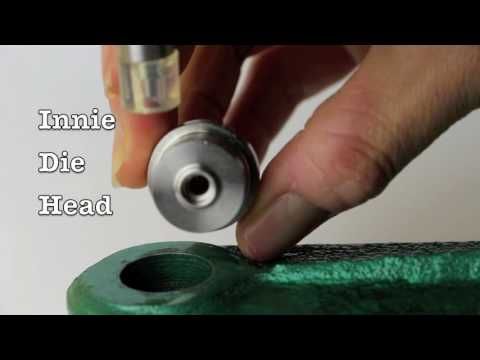
End caps vary. They can be made from different materials, and there can be plenty of design differences in the models. Installing sewer plugs is a fairly technological task, the implementation of which has become available relatively recently. Given the fact that the utility company does not have access to the inside of the riser, workers have to use another method. To implement the plan, video cameras with remote control, special light guides and manipulators are used. Sometimes owners think that the sewer is just clogged, and they are looking for ways to break through the blockage in the toilet. But in such cases it does not help.
The plug installation algorithm is as follows:
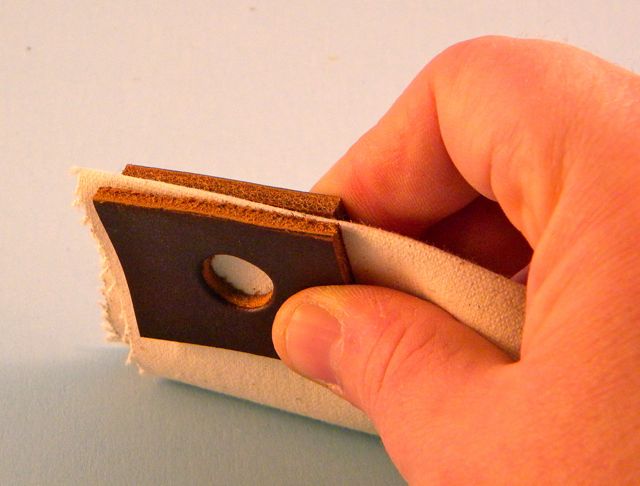
After installing the plug, the movement of drains from the apartment stops, sometimes completely, and sometimes partially. All other risers are working, and sewerage for all other apartments continues to function. It cannot be said that a large number of companies are engaged in the installation and removal of plugs. In general, there is not much difference, since the cost of such services and their quality are on an equal level.
It cannot be said that a large number of companies are engaged in the installation and removal of plugs. In general, there is not much difference, since the cost of such services and their quality are on an equal level.
Of course, companies are right in their own way, and they have to go to such lengths to get their way. But there is, after all, another side of the conflict - a person living in the same apartment. What to do if the plug for the sewer pipes is already installed, and the sewer has ceased to perform its functions?
First, you need to decide who is right and who is wrong. The easiest way to get rid of the problem is to pay bills. Yes, everything is so simple: after paying the bill, the specialists will immediately remove the plug, and the residents of the apartment will be able to use the plumbing.
However, there are other methods for removing plugs, which are often resorted to by apartment owners.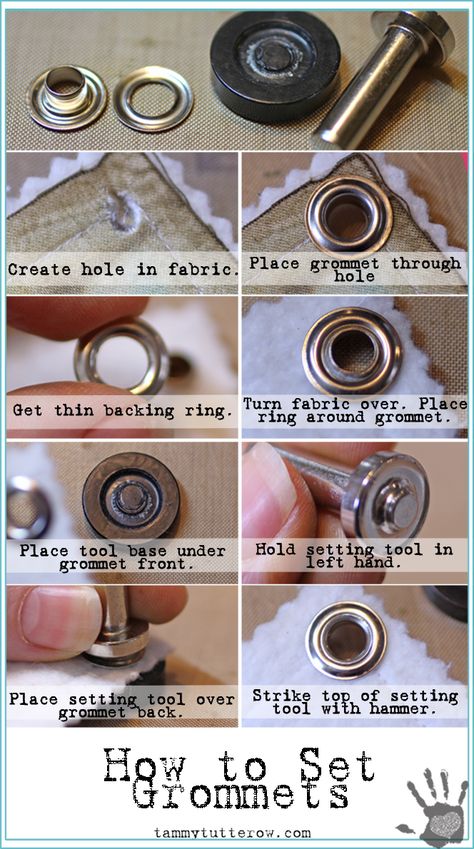 What is most interesting: there is nothing illegal in the fact that the tenant arbitrarily removes the plug from the pipe. To remove the plug, you do not need to gain access to the common riser, you just need to remove the plug from your side outlet, which is the property of the owner of the apartment. And since everything is correct from a legal point of view, you can remove the plug using the same methods that are used to clean the sewer system from blockages.
What is most interesting: there is nothing illegal in the fact that the tenant arbitrarily removes the plug from the pipe. To remove the plug, you do not need to gain access to the common riser, you just need to remove the plug from your side outlet, which is the property of the owner of the apartment. And since everything is correct from a legal point of view, you can remove the plug using the same methods that are used to clean the sewer system from blockages.
Immediately you need to understand the following point: pneumatic plugs for sewage are not eliminated with chemicals. The reason is simple: the same materials are used to make the plugs, which are used for pipes, therefore, destroying the obstacle, the sewer system in the apartment building is also destroyed at the same time - and its repair can cost much more than paying off debts.
Thus, the most accessible method for removing the plug is to use mechanical methods.This is the most correct answer to the question of how to remove the plug from the sewer. Naturally, the plug is held in the pipe more firmly than the floor cloth that got there, but enough effort should be enough.
So, the first and most accessible way implies that the plugs for the sewer to the debtors are removed with a plunger.
How it works:
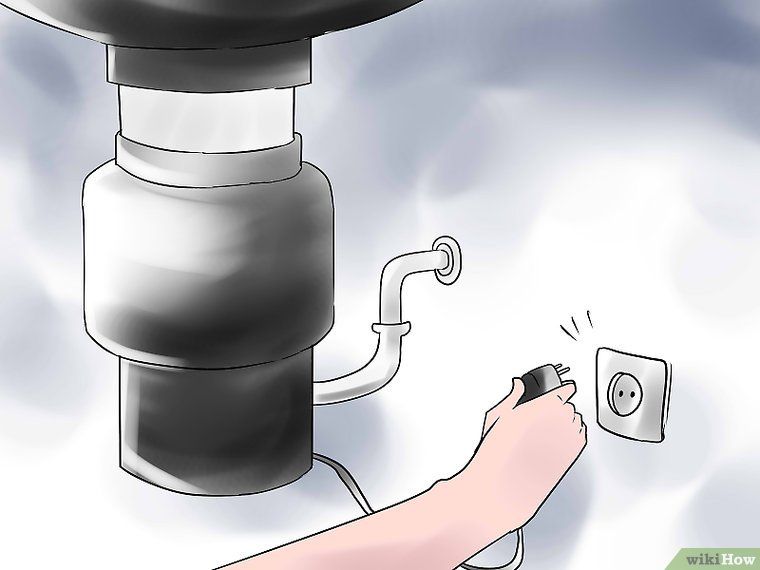 Water is not compressible, so the pressure will force it against the plug, forcing it out of the system.
Water is not compressible, so the pressure will force it against the plug, forcing it out of the system. If the installation of the plug in the sewer was performed poorly, then these actions will be enough to solve the problem. The only thing you should always remember before removing the plug from the sewer yourself is that the fallen plug can also get stuck in the main, after which the use of the sewer will be closed to all residents.
If the plunger does not help, then you can use a plumbing cable, with which the plug on the sewer pipe is also removed well. More information about using a plumbing cable can be found in the articles dedicated to this device. In short, a plumbing cable will allow you to get the plug and push it out, as a result of which the sewer will be released. In addition, you can make a plumbing cable with your own hands, which will simplify the task.
In extreme cases, if nothing helps, you can disassemble part of the sewer and get to the right place.